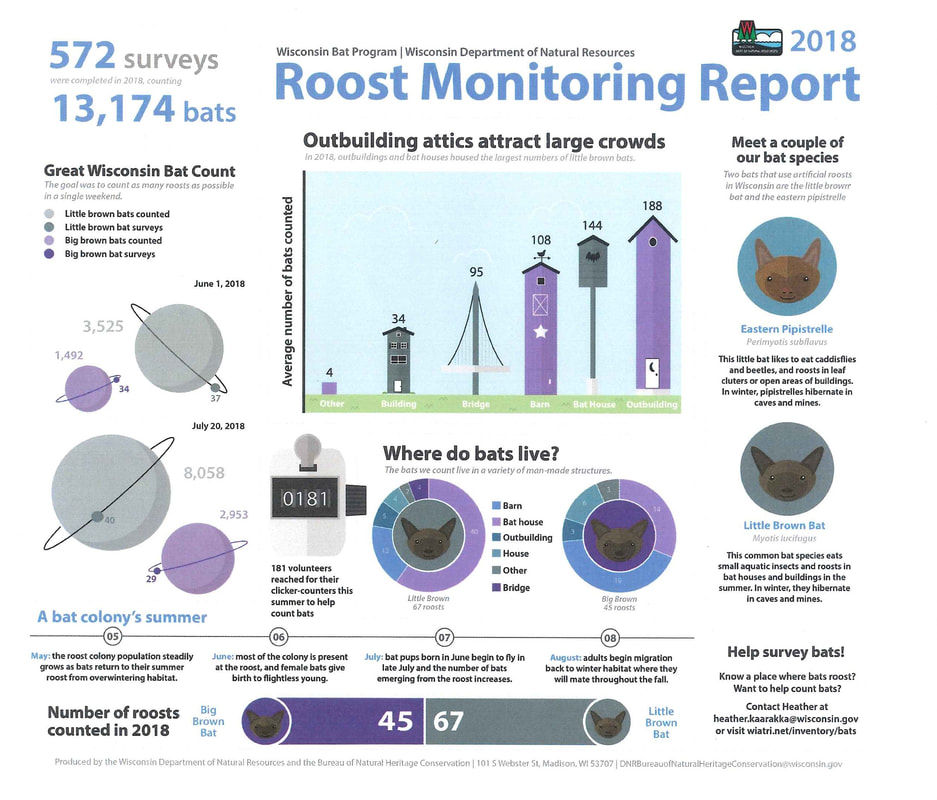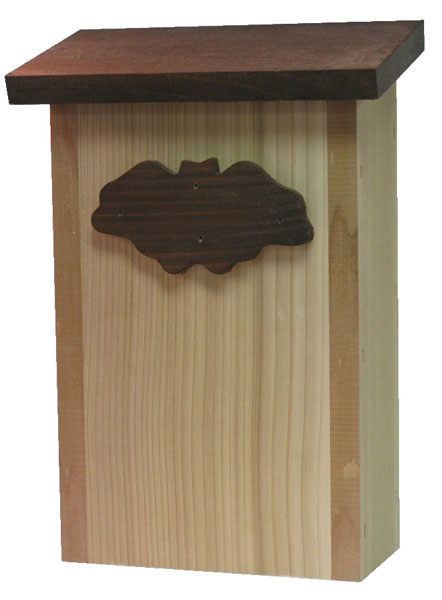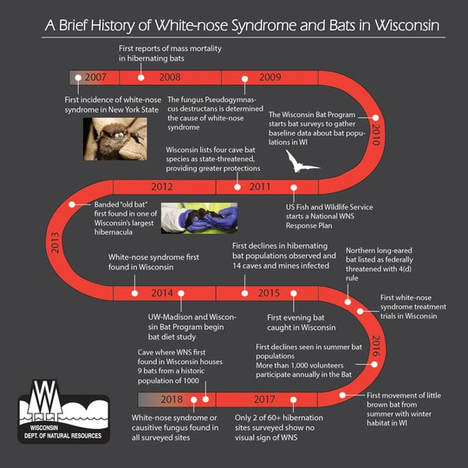Roost Monitoring Report
Join the community of caretakers– support the conservation of bats in Wisconsin.
Become a volunteer– got to wiatri.net/inventory/bats/volunteer
Make a tax-deductible donation– go to wiatri.net/inventory/bats/donate
Become a volunteer– got to wiatri.net/inventory/bats/volunteer
Make a tax-deductible donation– go to wiatri.net/inventory/bats/donate
Researchers Discover How 'Cryptic' Connections in
Disease Transmission Influence Epidemics
|
HELP BATS NOW &
IN THE FUTURE! |
We Can All Help Bats in Ways Big and Small Right Now, with bat populations severely reduced in most of our 60 surveyed hibernation sites, individual bats are important in a way they were not before—their tiny lives carry more weight on the scale of species survival. Similarly, we are each individually responsible for making choices about how we can help bats and other wildlife. We can all help in ways big and small.
- Set aside a Saturday morning soon to build or buy a bat house and put it up on your house or property.
- Reach out to get your name on our volunteer list so you can receive action alerts like the Great Wisconsin Bat Count, our call for acoustic volunteers, etc.
- Suggest and work with your local parks committee or school.
Keep Building Bat Houses!
|
Bats emerge from hibernation in caves and mines, and migrate back from overwintering sites in the south. Bats will decide where to spend the summer and explore sites, so any time is a great time to put up a bat house. Find a supply list, instructions, and videos to build a bat house. it's a great project! Get started.
|
Survey Shows Heavy Loss of Cave Bats!
MADISON - Winter cave and mine surveys in 2018 show that white-nose syndrome continues to ravage Wisconsin's cave bats and the steep loss of these beneficial insect-eaters is likely to be seen this summer in nighttime skies, state endangered resources officials say.
All 60 sites visited in winter 2018 were infected and at those sites, DNR conservation biologists found a 99 percent decrease from historic averages at the first documented infection site; a 92 percent drop at sites in their fourth year of infection, and an 85 percent drop at sites in their third year of infection. Wisconsin conservation biologists did find some silver linings in their 2018 winter surveys, and federal and university research DNR is assisting with are showing promise and progress in developing WNS vaccines and treatments. Read more.
All 60 sites visited in winter 2018 were infected and at those sites, DNR conservation biologists found a 99 percent decrease from historic averages at the first documented infection site; a 92 percent drop at sites in their fourth year of infection, and an 85 percent drop at sites in their third year of infection. Wisconsin conservation biologists did find some silver linings in their 2018 winter surveys, and federal and university research DNR is assisting with are showing promise and progress in developing WNS vaccines and treatments. Read more.




